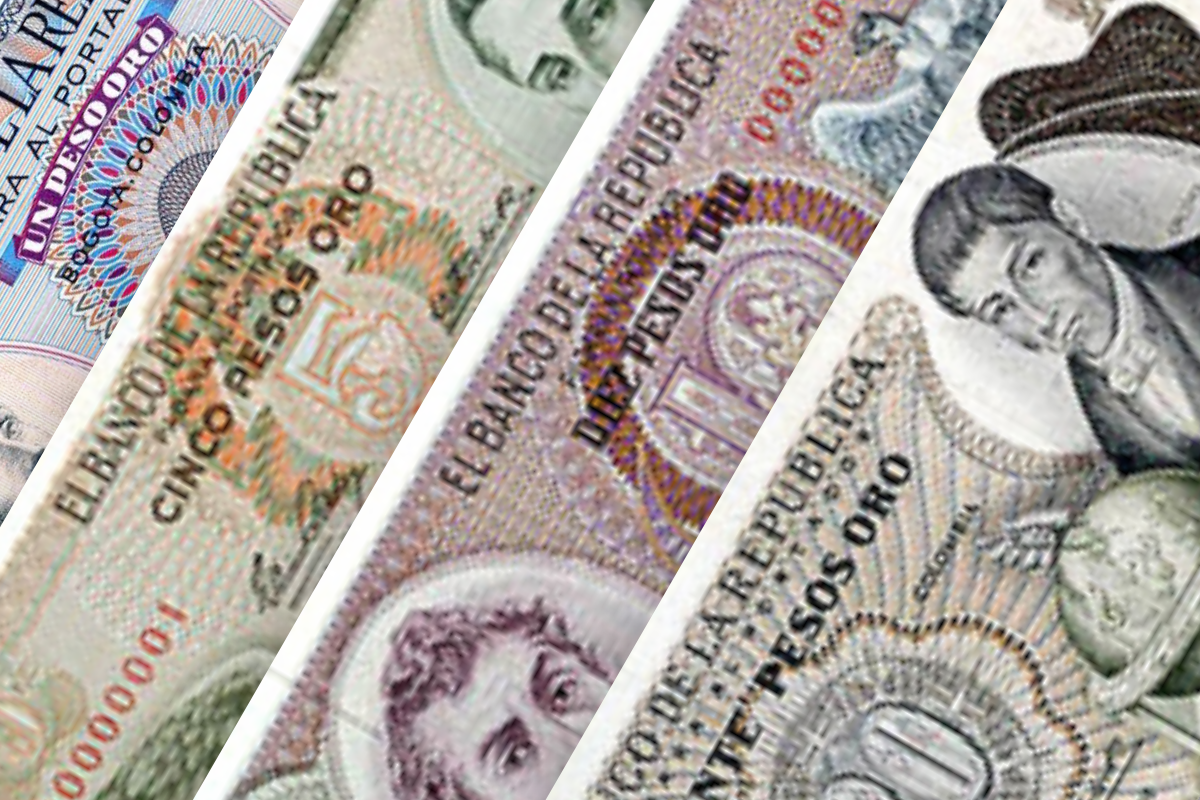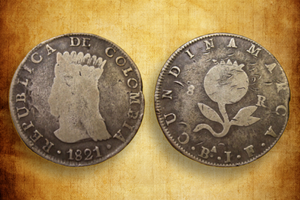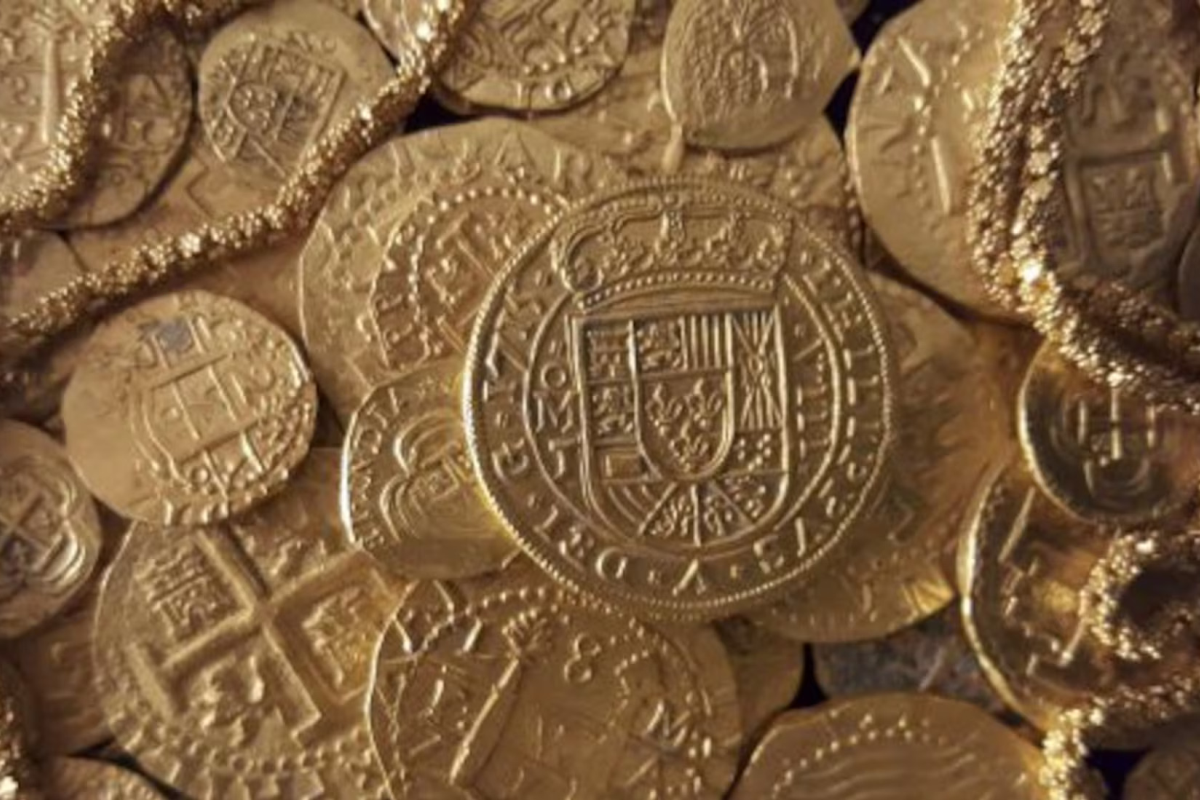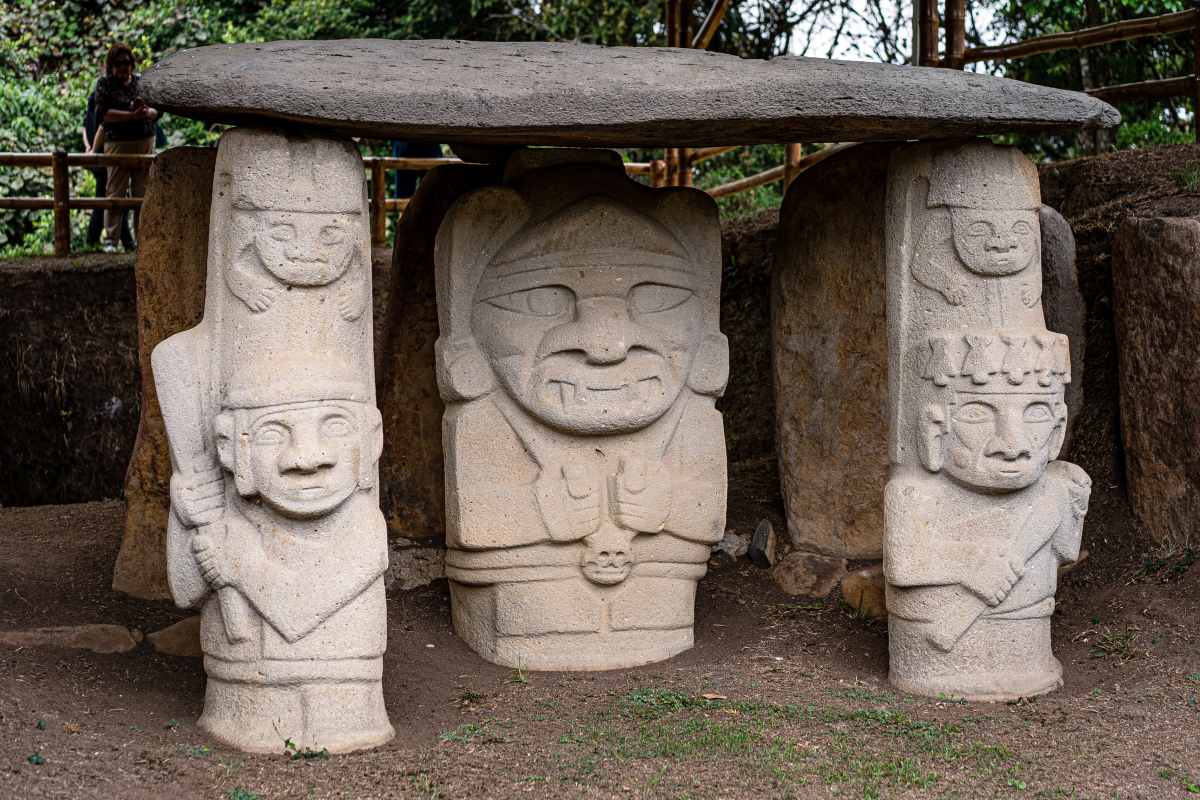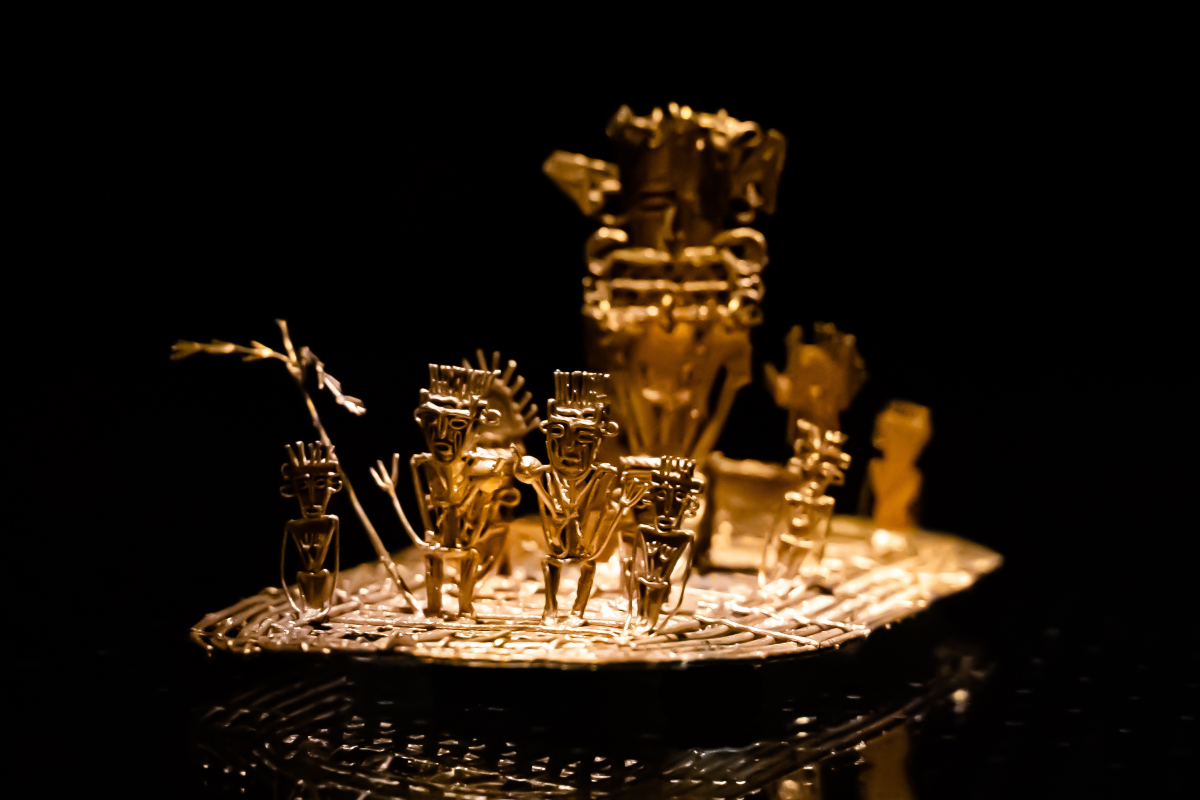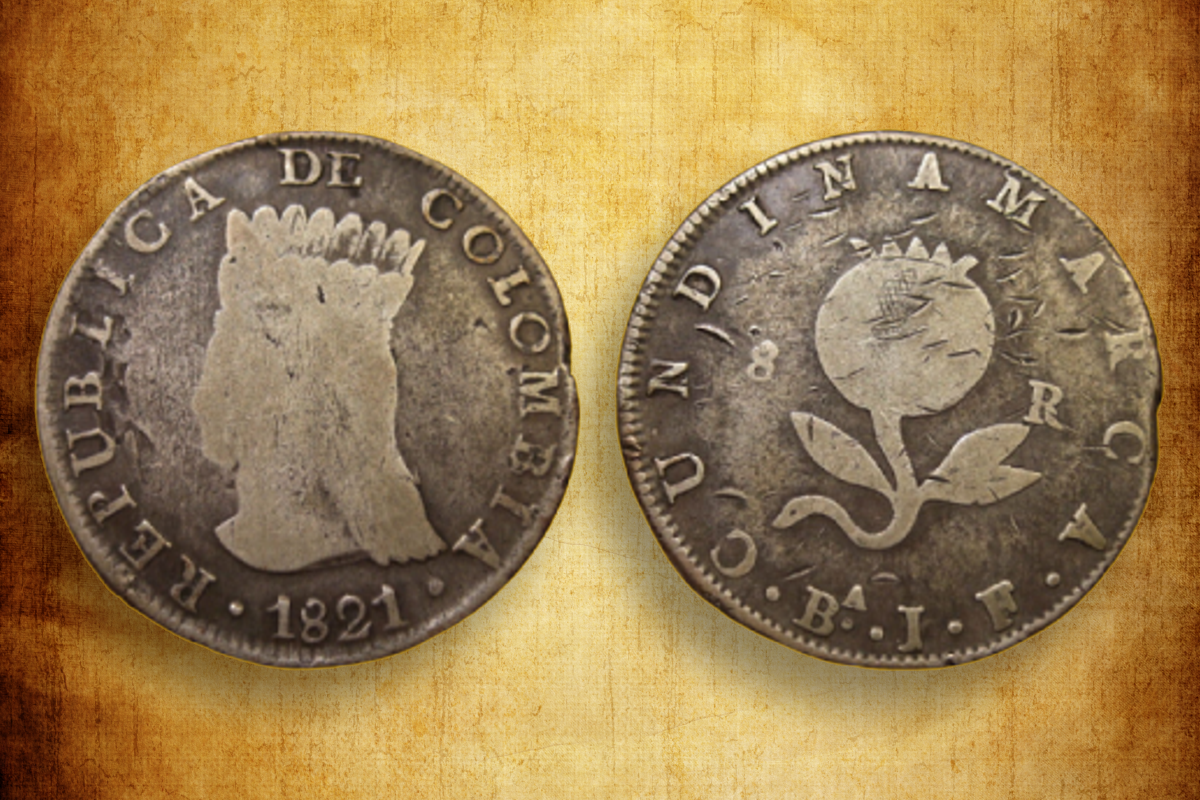The designs for these banknotes were generally contracted simultaneously with the delivery, and although the motifs and engravings, some of excellent quality and artistic value, referenced aspects of our country, they did not necessarily fully reflect Colombian culture.
Until the Printing Office began operations, the Bank met its banknote needs based on imports from renowned firms in Europe and the United States. The designs for these banknotes were generally contracted simultaneously with the supply, and while the motifs and engravings, some of excellent quality and artistic value, referenced aspects of our country, they did not necessarily fully reflect Colombian culture. Furthermore, the secondary motifs, borders, and other elements were not exclusive.

It should be noted here that banknotes, in addition to fulfilling the important function of enabling the daily development of a country's economy, along with the flag, the national anthem, and the coat of arms, are part of the emblems of sovereignty of each nation. Indeed, such documents are unique; they identify countries, and, due to their design characteristics (motifs, colors, and style), they reflect the idiosyncrasies of their peoples. Likewise, banknotes are an image of the integrity, character, and quality of the issuing entity and therefore must inspire the trust and security that users expect from them.
The aforementioned design condition of Colombian banknotes continued for most denominations, which even after the establishment of the Printing Press, required continued purchasing from abroad, until 1979, when the Bank's New Family of Banknotes was created, in which the institution directly intervened in the definition of the designs.
For the printing press's launch and initial operations, new designs were required for the denominations to be produced. Consequently, along with project development and staff training, a contract was issued to prepare the new symbols and the necessary original and printing materials. Likewise, while the technological assimilation stage was completed, the production level was to gradually increase, integrating increasingly new denominations into the programs, starting with the $1 bill.
Since the proposed general scheme contemplated, in the medium term, the Printing House's self-sufficiency, that is, the complete coverage of the process from the origin of the symbols to be produced to their delivery to the Bank's Treasury, the training program included the participation of artists and design technicians. After receiving basic instruction, they had the opportunity to practice under the guidance of increasingly hired experts in executing the designs for the banknotes that the Printing House would produce.
The basic project initially contemplated the gradual production of the $1, $5, $10, and $20 denominations. For this purpose, coordinated by the Giori Organization of Lausanne (Switzerland), the services of Professor Mario Biardi, one of the greatest banknote engravers of the modern era, were contracted. Engraving for the design of valuable documents, particularly portraits used as the main motifs of designs, the basis of intaglio printing, is recognized as the most refined combination of art and technique.

The engraving work on the four signs was carried out in the design workshops of the Banca D'Italia Printing House in Rome.
The work of generating originals for offset printing was completed with the dedicated collaboration of the Bank of Belgium at its Banknote Printing House in Brussels. In addition to Captain Torres, members of the selected Colombian team actively participated in this project, including Jaime Pardo C., engraver; Simón Bernal, mechanical engraving technician; Gabriel Gutiérrez, electroplating technician; and José Molina, photomechanical technician.
In this way, and after facing numerous difficulties due to a lack of experience, the preparation of the necessary materials for the production of the $1 bill was completed, whose design received the highest praise internationally. The obverse of this first bill printed in Colombia was dedicated to honoring the two most important heroes in our history, Simón Bolívar and Francisco de P. Santander. The issue date was October 12, 1959. The first issue bore the signatures of Ignacio Copete Lizarralde as manager and Jorge Cortés as secretary. The reverse included a vignette with an engraving of the Andean condor against a beautiful background of landscapes characteristic of the country, including a view of the once majestic Tequendama Falls.
Successively between 1961 and 1966, as the Printing House increased its production capacity, with increasing participation of the Printing House's artists and technicians, the designs were conceived and executed and the production of the $5, $10 and $20 bills was launched, in order to achieve, in that same order, the substitution of imports in those denominations.
The designs of these banknotes featured the following motifs: the $5 bill on the front featured an engraving of José María Córdoba and the Andean Condor. The first issue was dated January 2, 1961. The reverse featured a view of San Felipe Castle in Cartagena.
The obverse of the $10 note features a fantastic portrait engraving of Antonio Nariño, accompanied by a vignette with the denomination value beneath the figure of the Andean condor. The first issue was dated July 20, 1963. The reverse features a view of a section of the San Agustín Archaeological Park, featuring some of the monumental sculptures found there.
The obverse of the $20 note featured a portrait of the scholar Francisco José Caldas. The first issue was dated October 12, 1964. The reverse featured reproductions of the most representative pieces from the Muisca, Quimbaya, Calima, Darién, and Tolima cultures, belonging to the collection of the Gold Museum of the Bank of the Republic.

The first editions of these three signs bore the signatures of Eduardo Arias Robledo and Germán Botero de los Ríos as manager and secretary respectively.
Since 1966, the Printing House has supplied the Bank's needs in these four denominations.
During these years, while the demand for the $1 to $20 bills was gradually met, the design team completed its preparations and began working on a new $50 bill, produced entirely by Colombian personnel. This design featured the effigy of Camilo Torres as the main motif on the front, with the reverse dedicated to celebrating the emerald mining industry. Unfortunately, various circumstances, including the discrediting of this noble endeavor due to the violent trade in these gems, led to the decision not to produce this denomination with its new design locally.
Despite the obvious difficulties the printing house faced in its early years, by 1968 it was back to the condition envisioned by its founders, and the tremendous efforts made were considered to be beginning to bear fruit. However, at the beginning of 1969, a tragic event occurred that profoundly affected the printing house's existence. On February 26, 1969, Captain Eduardo Torres R. passed away.
The unfortunate event closes the first stage of the Printing Press, its process of organization and implementation until it achieved great prestige, especially recognized internationally.
Information taken from: https://www.banrep.gov.co/es/contenidos/page/primeros-billetes


